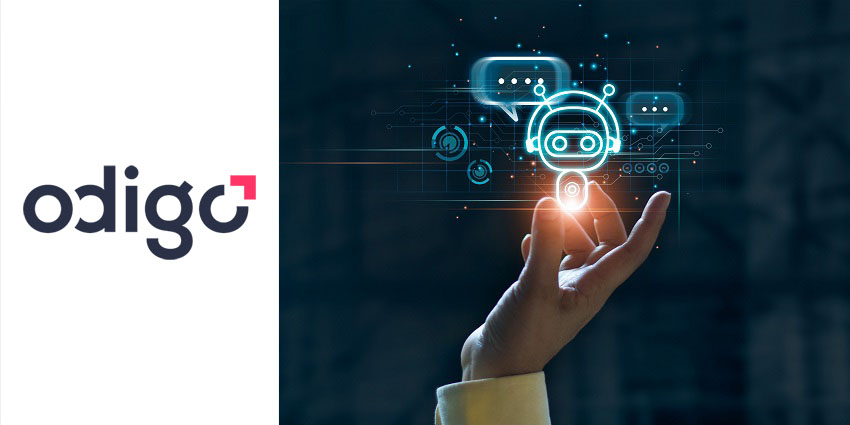Humans are brilliant but slow. AI is dumb but fast. Combining the best attributes of both is the future of contact centres.
This principle lies at the heart of the next must-have contact centre technology: agent-assist.
Augmenting agents with AI, this technology leverages data at the point where it is most relevant to customer conversations.
Yet, it does much more than fetch information from the CRM system and feed it to agents, as best highlighted in the following top ten use cases for augmented agents.
1. Gather Customer Information Upfront
Voicebots or AI-infused IVRs can collect customer information, as they wait to talk to an agent, that is relevant to their intent.
By passing this onto the agent, they can serve the customer more quickly, instead of waiting on the line as the customer finds their ID, delivery number, or any other relevant information.
Of course, this improves the agent experience while lowering abandon rates by creating a more engaging hold experience.
However, it is also an example of how the technology can lower handling times significantly, cutting costs, improving agent utilization, and relieving strain on the contact centre.
2. Customer Authentication
Biometrics systems can authenticate customers as they speak. When there is an issue, it relays this to the agent.
Many leading CCaaS vendor offer such security solutions. For example, PCI Pal Agent Assist is available in the market place of Odigo, a prominent contact centre technology provider.
The offering streamlines payment processes as agents press a “process card” button that sends the transaction to the payment provider.
As a result, the transaction takes place outside of the contact centre’s remit, enabling operations to meet PCI DSS regulations and taking the agent out of the equation.
3. Sentiment Analysis
Numerous studies suggest that emotions underpin CX success. As such, many agent-assist technologies are now powered by sentiment analysis.
Highlighting how these work, an Odigo whitepaper – entitled “Elevating contact center agent engagement and performance” – notes:
AI can detect rising and falling tones, a key first step of emotional intelligence that informs the agent about a customer’s mood.
Harnessing this feedback, agents can adjust their tone and language to enhance conversations.
Furthermore, many augmented agent technologies assess sentiment in the IVR or through an upfront voicebot. Passing this information to an agent pre-call, helps set their expectations, which is useful when dealing with angry customers.
4. Surface Customer Data In Real Time
Perhaps the most sought-after use case for augmented agents is AI that delves into various systems – such as the CRM – to provide timely, pertinent customer information.
Powered by natural language processing (NLP), natural language understanding (NLU), and robotic process automation (RPA), the technology acts on conversational queues to present agents with relevant data.
Yet, the technology also shares various other insights. Talking to CX Today, Neil Titcomb, Managing Director of Odigo, said:
The system can share relevant statistics, such as how many times the customer has recently called-in and the reasons for these calls. Agents can then make assumptions as to where the customer is on their journey, so the customer does not repeat things unnecessarily.
There are many other examples, which hinge on integrations with various other contact centre integrations. For instance, with a connection to the QA system, agents can benchmark performance in real-time, which is often a powerful engagement tool.
5. Proactive Knowledge Base Suggestions
Similar to the previous use case, here the agent assist tracks the conversation to share knowledge base content in real-time.
Popping up on the agent desktop, such knowledge articles inform an agent’s response when dealing with a difficult query. The article may even be good enough to share word-for-word.
Of course, this saves the agent lots of time navigating the knowledge base for the ideal support material, but it also helps to reduce periods of silence that often break rapport.
6. FAQ Suggestions
Some agent assist solutions stream numerous FAQ to the agent desktop, which are again relevant to the real-time conversation.
Automatically serving these up to agents streamlines customer conversations, but also ensures customers receive the same answer to particular queries across all channels.
Furthermore, such a solution, paired with a routing strategy that directs simple, transactional contacts to new agents, helps speed up agent ramp time.
With many contact centres eager to speed up onboarding to meet high demand, this solution enables them to do so without throwing newbies to the wolves.
7. Next Best Action Recommendations
While many contact centres still use scripts, some have transitioned to designing templates that guide agents through particular contact types.
The agent assist technology then understands intent and tracks the progress of the conversation. In doing so, it provides a flow of next-best-action recommendations, based on the template.
As such, agents can pivot their approach to sell, serve, or retain, depending on the contact centre’s primary objective for that query type.
8. Real-Time Voice Transcription
Ever asked someone to repeat themselves multiple times and still not understood what they said? We all have, to the point where we nod and move the conversation on.
Unfortunately, contact centre agents do not have that luxury. After all, it is critical to understand what customers say, not only for rapport, but ensuring that business meets their needs.
Thankfully, many agent-assist technologies transcribe conversations in real-time, ensuring that agents do not miss any critical pieces of information during a call.
9. Desktop Automation
Many CCaaS vendors will also possess the capability to automate desktop processes for agents, such as auto-filling forms, copying and pasting information, and mechanizing follow-ups for routine tasks.
For common customer queries – which are not viable to fix upstream or automate fully with conversational AI – understanding the repeated manual processes that agents take to solve these queries is good approach.
Why? Because, if automated, these will save agents the most time and allow contact centres to achieve the most bang for their buck.
10. Post-Call Summaries
By monitoring the processes that agents follow and the systems they enter, AI can track the breadcrumbs that agents leave as they complete the call.
In doing so, it can summarize the contact and complete most of an agents after call work (ACW) – including ticket tagging.
As such, agents only have to double-check the information, shaving seconds off every call, lowering agent workloads, and enabling significant contact centre cost savings.
Bring Augmented Agents Into Your Contact Centre
Odigo can bring each of these use cases to life (and more!). The vendor even offers tools to augment the supervisor experience with AI, enabling team leaders to monitor multiple conversations through speech-to-text (STT) transcriptions.
Eager to find out more? If so, visit: https://www.odigo.com/en-gb/products/artificial-intelligence/
Alternatively, the following whitepaper may provide further exciting insights: Elevate your contact centre agent engagement and performance







